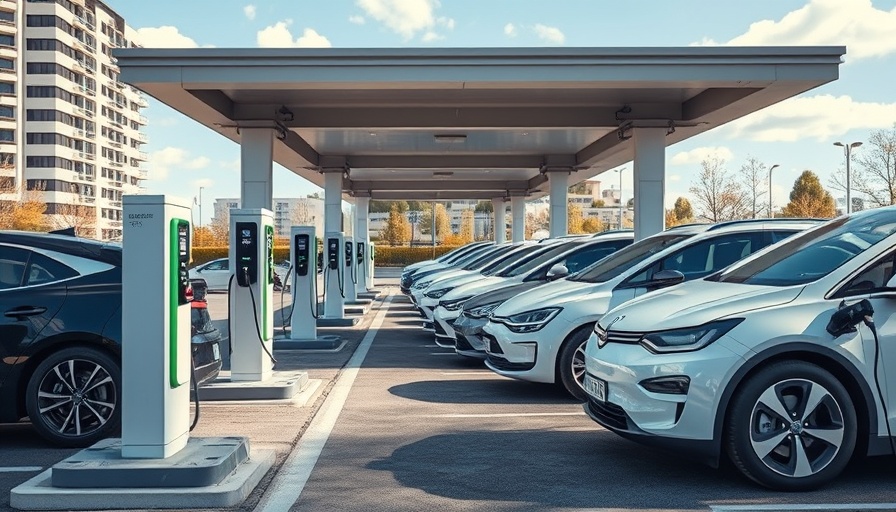
Unexpected Environmental Impact of Electric Vehicles
The adoption of electric vehicles (EVs) has surged as part of a global movement toward sustainable transportation. With numerous environmental benefits, EVs are celebrated for their role in reducing carbon emissions and combating climate change. Yet, a recent study conducted by researchers at UCLA unveils a hidden aspect of the EV revolution: the air pollution linked to EV charging stations. This revelation prompts us to reevaluate not only our choice of vehicle but also the infrastructure that supports them.
How EV Chargers Affect Air Quality
The UCLA findings indicate that the air quality near Direct Current Fast Charging (DCFC) stations is significantly compromised, with alarming levels of fine particulate matter. These particles, which can be inhaled and potentially enter the bloodstream, pose health risks, particularly for vulnerable populations with pre-existing conditions. Michael Jerrett, a professor at UCLA, reiterates the urgency of this issue, stressing that exposure to such particles can lead to serious health consequences, including heart and lung disease.
Where the Problem Lies: The Role of Fans
The source of this air pollution is a direct consequence of how fast charging stations operate. As the charging process generates heat, fans are necessary to prevent overheating in the system. Unfortunately, the operation of these fans inadvertently stirs up harmful particulates from the surrounding environment and the chargers themselves, exacerbating air quality problems.
Innovative Solutions from EV Manufacturers
In light of these findings, some electric vehicle manufacturers are taking steps to mitigate the issue. For instance, ChargePoint, which runs the largest network of charging stations in the U.S., is enforcing higher standards for air intake and exhaust systems in their chargers to reduce dust and debris intake. They are also planning to implement filters in their future designs to further limit the release of harmful particles into the air.
The Ripple Effect on Local Communities
This study sheds light on how advancements in technology can carry unintended consequences for our health and wellbeing. As EV usage continues to proliferate, it remains vital to consider not only the positive impacts of these vehicles but also their infrastructural ramifications on air quality. Understanding this balance is essential, especially in communities that heavily rely on public charging stations.
Next Steps for Residents and Communities
As electric vehicle owners and potential buyers, being informed about the environmental implications of charging infrastructure can guide our choices. Advocating for cleaner, more efficient charging technologies and supporting policies that prioritize air quality can drive collective change. We must also consider integrating measures for improving air quality around communities with higher concentrations of charging stations.
The Future of Electric Vehicles and Environmental Health
As we navigate the future of transportation, it’s imperative that we maintain dialogue about the broader implications of electric vehicles on our health. With ongoing research and innovation, there is the potential for the development of cleaner charging technologies that could mitigate air pollution effects associated with current systems. As stakeholders in this transition, we can demand accountability and advocate for solutions that prioritize health alongside sustainability.
 Add Row
Add Row  Add
Add 




Write A Comment